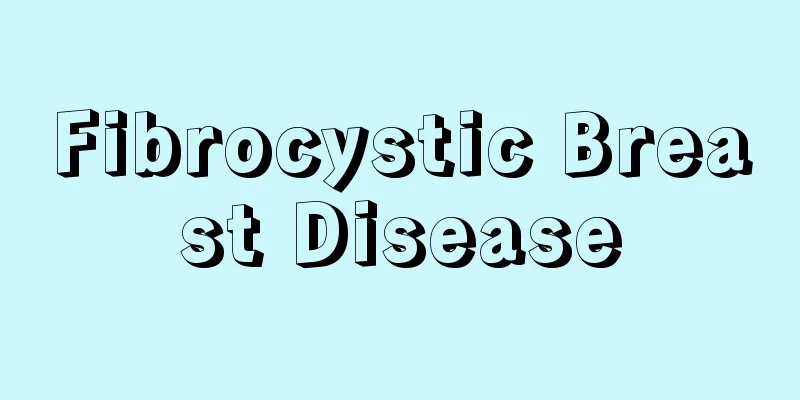Fibrocystic Breast Disease

|
Fibrocystic breast disease is a relatively common breast disease. Some women may develop this disease. Generally speaking, this disease is not caused by inflammation, nor is it a type of tumor, but it must not be ignored because this disease may become cancerous in the later stages. After the disease is discovered, it must be actively treated. Let's give people a detailed introduction to fibrocystic breast disease so that people can have a deeper understanding of this disease. Fibrocystic Breast Disease Fibrocystic breast disease is a disease that is neither inflammatory nor tumorous. Instead, it is a disease of breast structural disorder characterized by proliferation of breast fibrous tissue and epithelium accompanied by cyst formation. Therefore, foreign scholars call it fibrocystic breast disease. Fibrocystic Breast Disease Fibrocystic breast disease is a disease that is neither inflammatory nor tumorous. Instead, it is a disease of breast structural disorder characterized by proliferation of breast fibrous tissue and epithelium accompanied by cyst formation. Therefore, foreign scholars call it fibrocystic breast disease. Fibrocystic breast disease was first described by Astley Cooper in 1829, and it was found that the disease could turn into cancer in the later stages. Therefore, it has always been considered a precancerous lesion and has received widespread attention from many scholars, who have conducted a large number of clinical studies and follow-up observations. It is now believed that the disease begins with glandular epithelial hyperplasia, and gradually leads to a series of pathological changes in tissue morphology, such as fibrous tissue hyperplasia, fibrocystic hyperplasia, and fibroadenoma formation. The disease can progress gradually or stop at a certain stage and heal on its own. In some cases, it can develop into cancer. Because the clinical manifestations of the disease are different in different stages, there are various names for it, such as breast hyperplasia, lobular hyperplasia and breast dysplasia. Combining the clinical and pathological findings, it is more appropriate to name it fibrocystic hyperplasia. Fibrocystic breast disease is the most common breast disease in women. The incidence rate in people aged 30-50 can be as high as about 15%, and it accounts for 50%-70% in breast disease specialist clinics. The peak age is 30-45 years and rarely occurs in postmenopausal women. Fibrocystic breast disease causes It is now generally accepted that endocrine disorders are the main cause of fibrocystic breast disease. The breast is the target organ for hormones such as estrogen, progesterone and prolactin. Estrogen can cause the mammary ducts to dilate and extend, promote the synthesis of cellular protein and the utilization of sugar, enhance the permeability of capillaries and promote the retention of water and sodium in tissues. Progesterone can make the alveoli that have been stimulated by estrogen further develop into lobules, and can also reduce the permeability of capillaries and the retention of water and sodium in tissues. Prolactin also promotes the growth and development of mammary epithelium. When the estrogen level in the uterus increases absolutely or relatively, or the progesterone level decreases relatively or absolutely, it will cause an imbalance in the hormonal environment in the uterus, ultimately causing a disorder in the breast structure. It has been confirmed that luteinizing hormone can promote the maturation and ovulation of ovarian follicles, and then promote the secretion of progesterone and prolactin. Both can promote the proliferation of mammary epithelium and stroma. Some scholars also believe that oral contraceptives may induce fibrocystic breast disease, and taking xanthines and other drugs with similar structures and smoking may aggravate the condition. In short, the etiology and pathogenesis of fibrocystic breast disease are very complicated. The pathogenic effect of estrogen is more obvious, while the role of progesterone and prolactin needs further exploration and clarification by researchers. |
<<: What causes vulvar dryness and pain?
>>: Can women take brain-boosting and kidney-tonifying pills?
Recommend
Is it good for women not to have pubic hair?
Most women do not want their body hair to be too ...
Cervical bleeding during pregnancy
If you feel cervical bleeding during pregnancy, y...
"Empty-Nest" Elderly People Beware of "Empty-Nest Syndrome"
The "empty nest" syndrome in the elderl...
How long after cesarean section can I have an IUD inserted
After a cesarean section, people will choose to h...
Pictures of hemorrhoids prolapse in late pregnancy
It is very easy to develop hemorrhoids during pre...
Can I drink ginger soup during menstruation?
Ginger soup is a kind of soup made with ginger. M...
What are the causes of gynecological diseases?
Now is the season when gynecological inflammation...
Counterpoint: China's overall smartphone sales fell 7% year-on-year in the first six weeks of 2024
At the beginning of 2024, the Chinese mobile phon...
How long does it take to be considered amenorrhea if you don't have your period?
Although girls have their periods every month, if...
It is recommended that single girls read this article carefully! (Those who are already single should read this even more)
Appendix: References [1] Expert consensus on immu...
Women who do not control their sexual intercourse are prone to illness
Cervical erosion Cervical erosion is a manifestat...
Is Mapo Tofu the same as Spicy Tofu? What is the difference between Mapo Tofu and Spicy Tofu?
We all know that tofu is a common soy product in ...
What to eat during menstruation to reduce heat the fastest
Many female friends will easily get angry during ...
How to educate and guide children in their rebellious period? How to communicate and educate girls in their rebellious period?
Over the past few decades, the percentage of illi...









